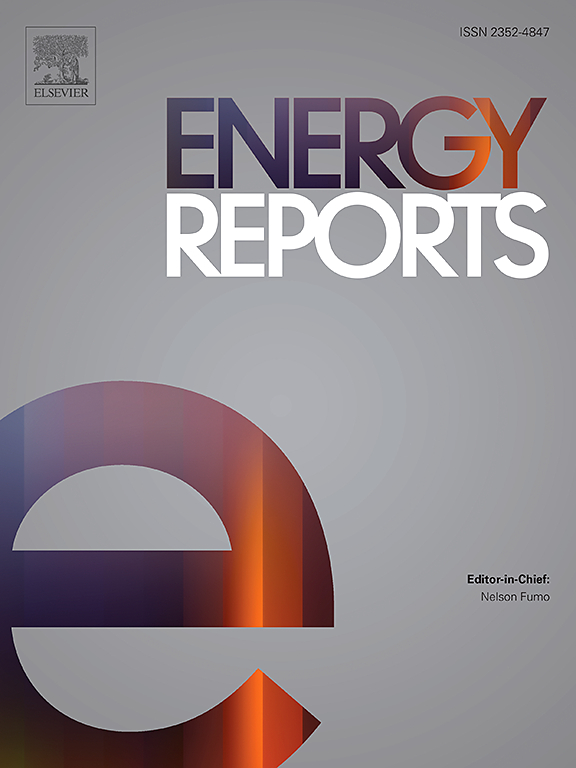微通道散热器中微封装相变材料浆料的热水力性能
IF 5.1
3区 工程技术
Q2 ENERGY & FUELS
引用次数: 0
摘要
相变材料(PCMs)在相变过程中储存和释放热能的独特能力使其成为解决现代紧凑型能源系统所面临的能源效率相关挑战的重要材料。在此背景下,本研究探讨了特定熔点为37°C的微封装相变材料(mPCMs)在对流传热条件下在微通道散热器(MCHS)中的热性能和水力性能。研究了不同质量浓度(5-15 %)和进口速度(0.55-1.20 m/s)下,mpcm的热边界层(TBL)、体流平均温度、壁面温度、局部和平均努塞尔数(Nu)、MCHS压降(ΔP)和性能评价因子(PEF)等性能参数。在进口速度为1.2 m/s,质量浓度为15 %时,Nu和ΔP分别增加了21 %和16.7 %。当质量浓度为10 %,入口速度为1.2 m/s时,PEF达到最大值1.29。PEF是一个平衡传热增益与压降增加带来的相关损失的量。这些压降损失通常是由于mpcm的质量浓度上升导致浆体粘度增加而造成的。关键热物性的参数敏感性分析证实了CFD模型在±10 %变化下的稳健性。mPCM浆液热性能的显著改善强调了其在现代能源系统中传热和热能储存的潜力。将mpcm与微通道热交换系统集成将提高现代热能储存和传热系统的能源效率,并降低运营和维护成本。本文章由计算机程序翻译,如有差异,请以英文原文为准。
Thermal and hydraulic performance of microencapsulated phase change material slurries in a microchannel heat sink
The distinctive capability of Phase Change Materials (PCMs) to store and release thermal energy during the phase change process makes them important materials for tackling the energy efficiency-related challenges faced by modern compact energy systems. In this context, the present study explores the thermal and hydraulic performance of microencapsulated phase change materials (mPCMs) with a specific melting point of 37°C within a microchannel heat sink (MCHS) operating under convective heat transfer conditions. Various performance parameters, including the thermal boundary layer (TBL), bulk fluid mean temperature, wall temperature, the local and average Nusselt numbers (Nu), the pressure drop (ΔP) across the MCHS, and the performance evaluation factor (PEF), were investigated under varying mass concentrations (5–15 %) and inlet velocities (0.55–1.20 m/s) of the mPCMs. The increase in the Nu and ΔP was found to be 21 % and 16.7 %, respectively, at an inlet velocity of 1.2 m/s and a mass concentration of 15 %. The PEF was found to reach a maximum value of 1.29 for a mass concentration of 10 % and an inlet velocity of 1.2 m/s. The PEF is a quantity that balances the gains achieved in heat transfer with the associated penalties due to the increase in pressure drop. These pressure drop penalties typically occur due to an increase in the viscosity of the slurry due to the rise of the mass concentration of the mPCMs. Parametric sensitivity analysis for key thermophysical properties, confirmed the robustness of the CFD model under ±10 % variations. The significant improvement in the thermal performance of the mPCM slurry underscores its potential for heat transfer and thermal energy storage in modern energy systems. Integrating mPCMs with microchannel heat exchange systems will enhance the energy efficiency of modern thermal energy storage and heat transfer systems and reduce operational and maintenance costs.
求助全文
通过发布文献求助,成功后即可免费获取论文全文。
去求助
来源期刊

Energy Reports
Energy-General Energy
CiteScore
8.20
自引率
13.50%
发文量
2608
审稿时长
38 days
期刊介绍:
Energy Reports is a new online multidisciplinary open access journal which focuses on publishing new research in the area of Energy with a rapid review and publication time. Energy Reports will be open to direct submissions and also to submissions from other Elsevier Energy journals, whose Editors have determined that Energy Reports would be a better fit.
 求助内容:
求助内容: 应助结果提醒方式:
应助结果提醒方式:


